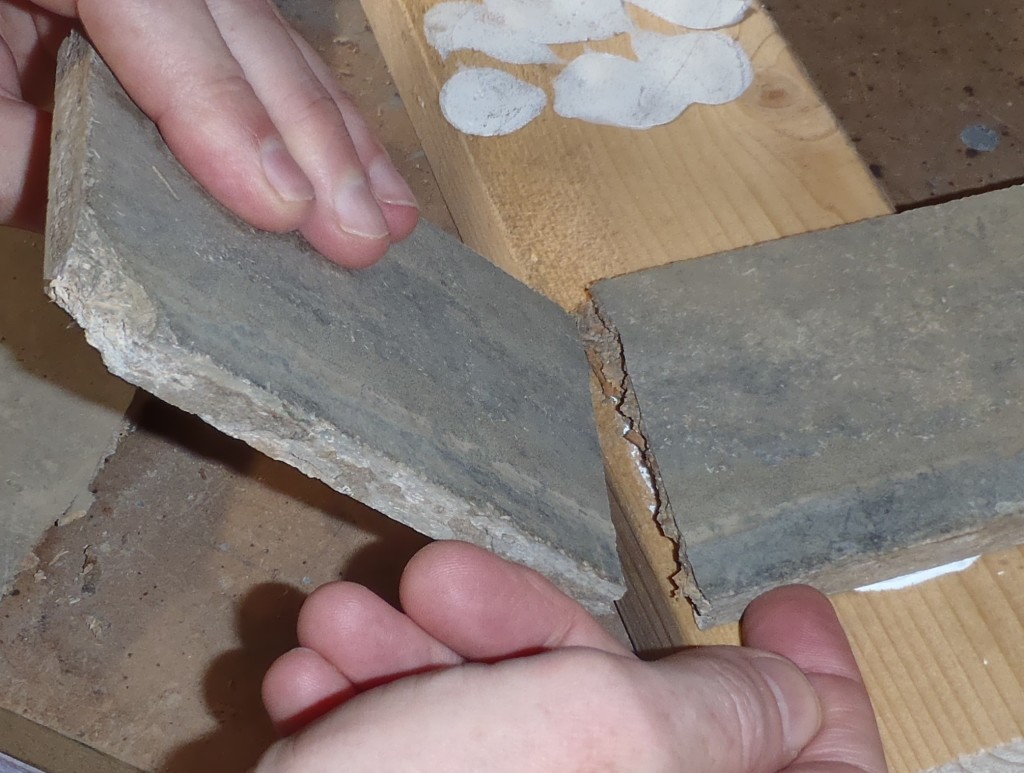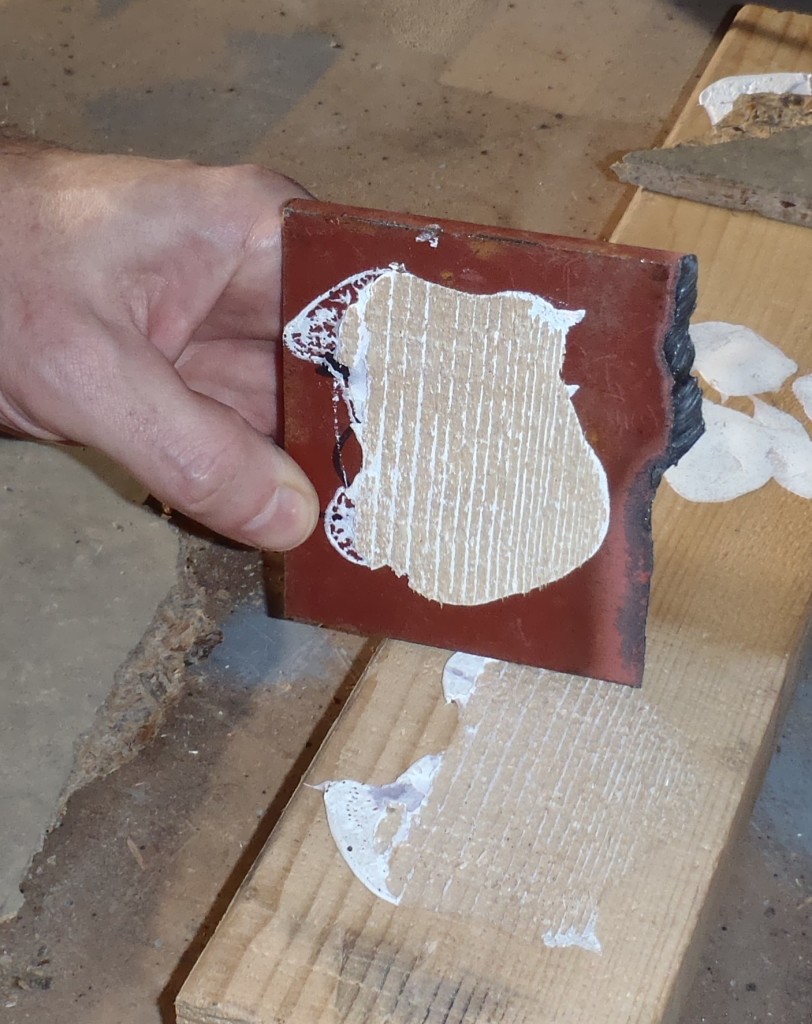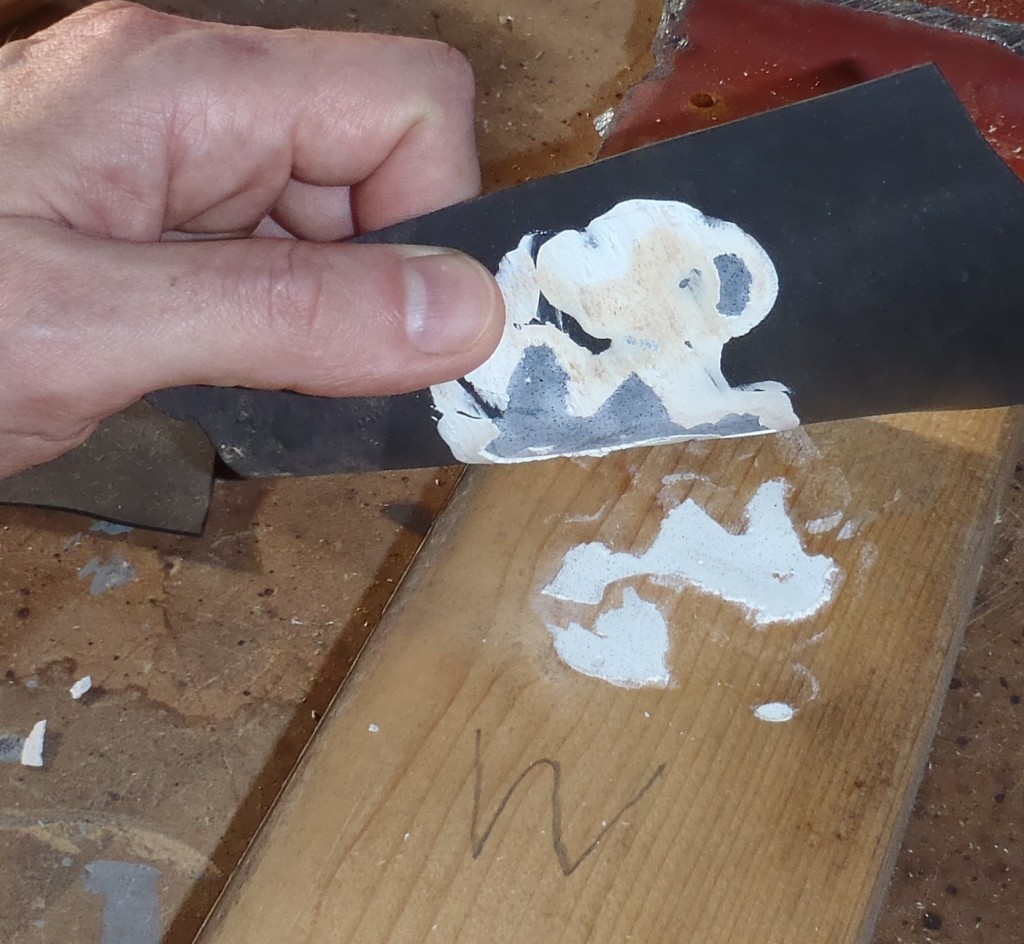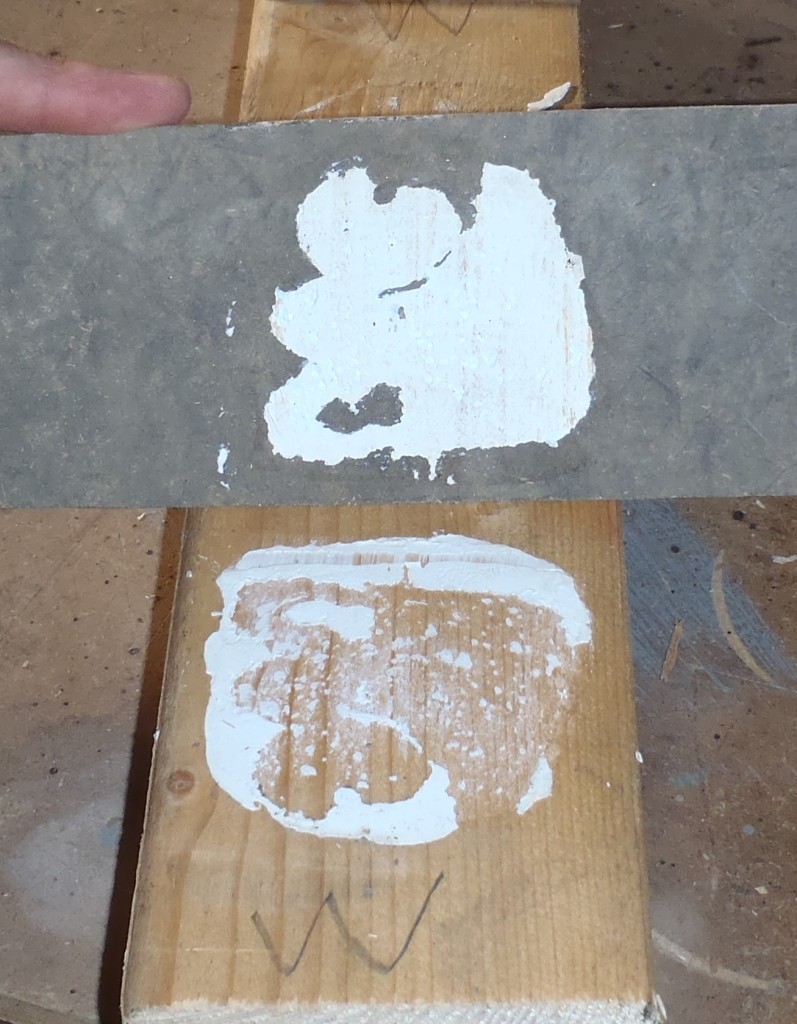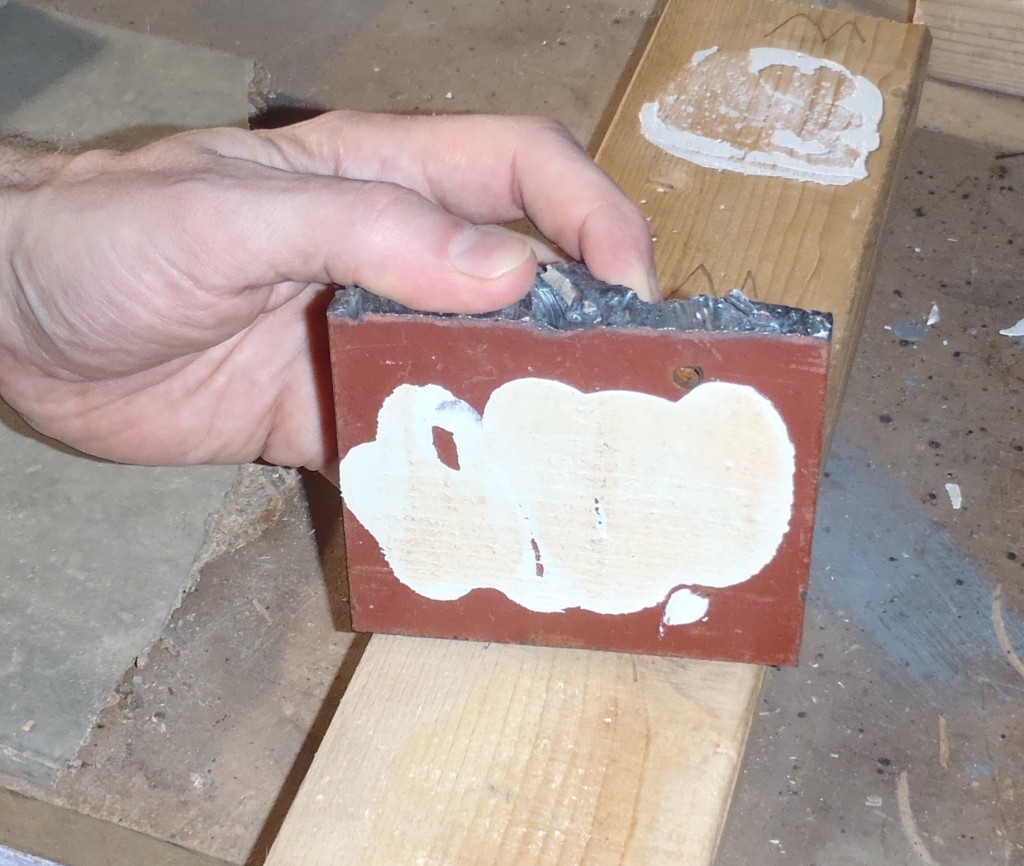This morning, we went back to our test pieces after having 24 hours to set and cure.
The first one under the spotlight is the dry wood:
The rubber piece peeled off cleanly leaving behind the solid glue on the wood. It was quite hard to pull it off. The glue was well stuck on the wood.
the cement board didn’t budge and just snaped at the joint.
Tried to use mini crowbar to force the piece off but kept breaking.
The Steel was very well held and it took quite an effort to drive the crowbar in at an edge.
It finally came off but only by splitting a layer wood fibre completely off the timber. The glue was well and truly stuck on the metal.
Now for the second test piece, the wet one:
The rubber piece came off fairly easily and the glue was still stuck to the rubber and not the wood itself.
The cement board came off also fairly easily with the crowbar and only had some splitting of wood fibres. We didn’t try bending the end up!!
The steel was easier, just like the other two pieces, and again, only having a little bits of split wood fibre.
Conclusions:
Withstanding the difficulty of having two identical timber pieces with the same surfaces, it does seems to indicate that gluing onto dry surfaces is much better than wet ones, which of course is always going to be the case.
But at the end of the day, we were attacking these test pieces with far more force and pressure, including the wet test case and in reality, the strength of the bond should be perfectly fine for our purposes. Also, we have to remember that we won’t be working in totally dripping conditions and most likely will be dry or only slightly damp when we are building our house!!
That was one very interesting little quick test – grin!!

